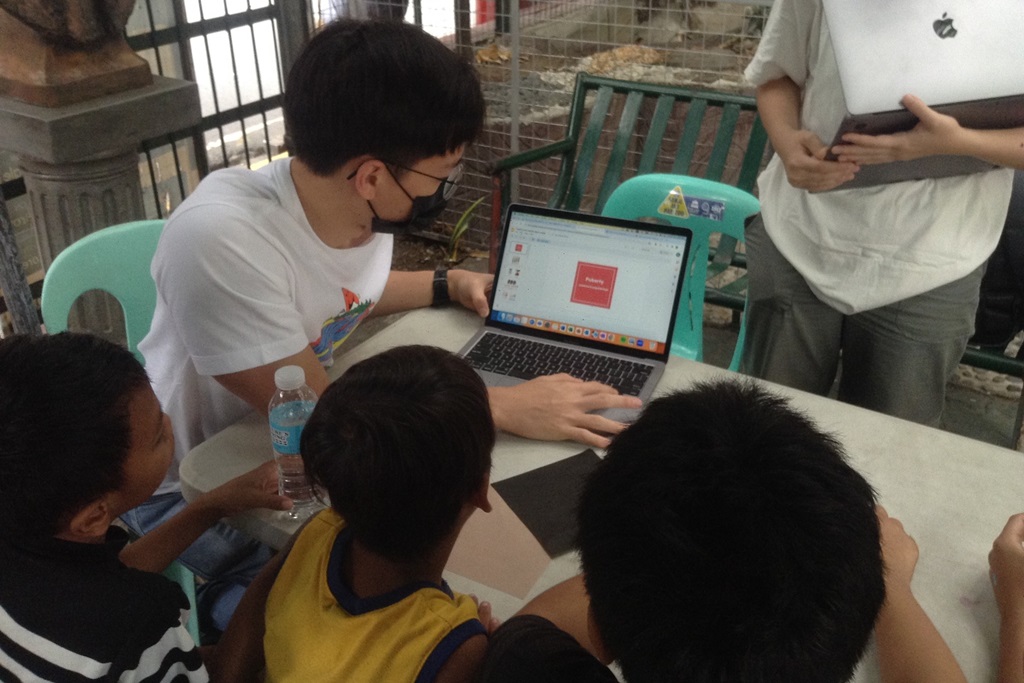Education today is not confined to textbooks and classroom lectures anymore. Instead, it transcends traditional boundaries, thanks to the remarkable strides in technology. At the forefront of this educational revolution is the innovative use of educational technology, a catalyst driving transformative change in learning environments worldwide.
Let’s take a closer look into the role of technology in education and its profound significance and impact, particularly in organizations like Childhope Philippines, where every child’s right to education is championed.
What is Educational Technology?
Educational technology encompasses the integration of technology tools and resources into the learning process to facilitate better understanding and retention of knowledge. From interactive whiteboards to online learning platforms, educational technology encompasses a wide array of tools designed to enhance teaching and learning experiences. It leverages multimedia elements, simulations, and virtual environments to create immersive learning experiences that cater to diverse learning styles.
Educational technology has evolved significantly over the years, with the emergence of innovative tools such as artificial intelligence (AI), virtual reality (VR), and augmented reality (AR). These technologies hold immense potential to revolutionize education by providing personalized learning experiences and promoting active engagement among students.
However, on the opposite end of the pole, technology can also be used to help advocate for the right of the disadvantaged youth — children in the streets — to access education.
How Important is Technology in Education?
The importance of technology in education cannot be overstated. It serves as a potent catalyst for innovation, enabling educators to rise above the limitations of traditional teaching methodologies. With the advent of digital tools and platforms, educators can create dynamic lesson plans, incorporate multimedia elements, and personalize learning experiences to meet the unique needs of each student. Moreover, technology fosters collaboration and communication, breaking down barriers and enabling students to connect with peers and experts globally.
According to a study published by the International Journal of Information and Education Technology, technology-enhanced learning environments have been found to significantly improve student engagement, motivation, and academic performance. Additionally, the flexibility and accessibility offered by online learning platforms have revolutionized education, allowing students to learn at their own pace and convenience.
Education for Street Children in the Philippines
In the Philippines, the issue of street children is a pressing concern, with a significant portion of the population facing economic hardship and social marginalization. According to UNICEF, there are an estimated 250,000 street children in the Philippines, many of whom lack access to basic necessities such as food, shelter, and education.
For these vulnerable children, technology in education holds immense potential to break the cycle of poverty and provide pathways to a better future. With innovative initiatives such as mobile learning hubs and online education programs, technology can reach street children in even the most remote and underserved communities, offering them access to quality educational resources and opportunities.

Why is Technology Important in Education?
Technology plays a crucial role in education by enhancing engagement, personalizing learning experiences, expanding access to resources, preparing students for the digital economy, fostering collaboration and communication, enabling innovative assessment methods, and addressing learning gaps and inequities. By harnessing the power of technology in education, we can empower students to become lifelong learners equipped with the knowledge, skills, and competencies they need to thrive in the digital age.
Here’s a detailed rundown of the importance of technology in education:
Access to Resources and Information
According to UNESCO, in 2018 alone, there were approximately 258 million out-of-school children and youth worldwide, with poverty being a significant barrier to education. Given the critical juncture today, educational technology has the potential to bridge this gap by providing remote learning opportunities and access to digital resources.
Fortunately, the internet today has widely democratized access to information, making a vast repository of knowledge readily available to students regardless of their geographical location. Educational websites, digital libraries, and online databases provide students with access to a wealth of resources, from scholarly articles to interactive tutorials. This access to diverse and up-to-date information empowers students to explore topics beyond the confines of the curriculum and encourages independent inquiry and critical thinking skills.
Addressing Learning Gaps and Inequities
Educational technology has the potential to address learning gaps and inequities by providing tailored support to students who are at risk of falling behind. Adaptive learning platforms can identify areas of weakness and deliver targeted interventions to help students master difficult concepts.
Additionally, technology-enabled remote learning programs can reach populations residing in rural or remote areas where access to quality education is limited. By leveraging technology to provide equitable access to education, we can narrow the achievement gap and promote educational equity for all students.
Enhanced Engagement and Interaction
Technology offers dynamic and interactive learning experiences that captivate students’ attention and foster active participation. Interactive multimedia elements, simulations, and virtual reality applications make abstract concepts tangible, enabling students to engage with the material in meaningful ways.
Innovative Assessment Methods
Considering their lack of inclusivity, traditional methods of assessment such as standardized tests and written exams have limitations in measuring students’ understanding and skills comprehensively. Technology offers innovative assessment tools and methods that provide deeper insights into students’ learning progress and achievements.
For example, digital portfolios, multimedia projects, and performance-based assessments allow students to demonstrate their knowledge and skills in authentic and creative ways. These alternative assessment methods provide a more holistic picture of students’ abilities and facilitate formative feedback for continuous improvement.
Inclusive and Personalized Learning
Technology fosters inclusivity by accommodating diverse learning needs, thereby ensuring that every child has an equal opportunity to learn and succeed. For example, assistive technologies such as screen readers and speech recognition software empower students with disabilities to participate fully in the learning process.
Every student has unique learning preferences, strengths, and challenges. Technology allows for personalized learning experiences tailored to individual needs, learning styles, and pacing. Adaptive learning platforms use algorithms to analyze students’ performance and adjust the content and pace of instruction accordingly. This personalized approach ensures that each student receives targeted support and opportunities for growth, ultimately leading to improved learning outcomes.
Related Article: The Hope of Out-of-School Youth in the Philippines

Education Programs of Childhope Philippines
Childhope Philippines, a beacon of hope for street children, recognizes the transformative power of education in breaking the cycle of poverty and exploitation. Through our education programs, we endeavor to provide marginalized children with access to quality education and essential life skills. Leveraging educational technology, we harness the power of digital tools and platforms to deliver innovative learning experiences to street children, empowering them to realize their full potential and pursue their dreams.
Our Street Education and Protection (STEP) Program is divided into 4 major components; through which we implement activities that aim to ensure holistic development for the children and youth that we meet.
KalyEskwela
Our school on the streets is a campaign that recognizes the value of education in today’s technology-reliant world. We make sure that we educate the children under our care through Alternative Learning System (ALS) wherein we use modules and audiovisual equipment to conduct classes and trainings.
Skills Development
We provide leadership trainings, computer literacy trainings, and sports and arts clinics, among others. We ensure that we also nurture their values and personalities as part of practical education initiatives.
Psychosocial Interventions
Youth empowerment also encompasses the well-being of the youth. We provide counseling for those who might have trouble dealing with stress and challenges that they encounter, especially while learning.
Health and Medical Services
KliniKalye, our mobile health clinic, provides primary preventive medical care, consultations, and treatments to make sure that our youth is in optimum health condition to learn.
With these factors in mind, we continue to stay at the forefront in educational programs with the belief that empowering the youth can positively impact the community.

Bring Hope to Street Children Through Educational Opportunities
As we reflect on the transformative role of technology in education, let us not forget the countless street children whose access to education hangs in the balance. You can make a difference by supporting Childhope Philippines’ mission to bring hope and educational opportunities to these vulnerable children. Whether through donations or volunteer work, your contribution can empower street children to break free from the shackles of poverty and build a better future for themselves and their communities.
Together, let us harness the power of technology to transform lives and build a more inclusive and equitable society. Join us in supporting Childhope Philippines and be a beacon of hope for street children in need.
